Summer Harvest Time
Summer Harvest Time
Summertime is a time of fresh produce coming from the fields every day. Most people can recount a special summertime memory that involves the joys of fresh tomatoes, or peaches! Canning or preserving with grandma, growing your own, or visiting a local farm to pick your own! Summer is a great time to eat well… Read More »
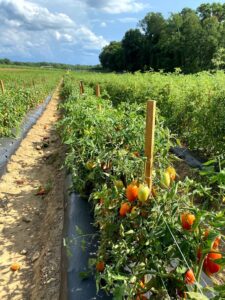
Peaches and tomatoes are in season right now and we grow over 35 acres of peaches and 10 acres of tomatoes. If you searched around the internet you will see that there are so many recipes featuring peaches and tomatoes. This is mainly because the flavor profile of peaches and tomatoes is harmonious. Both are sweet, bright, and juicy and are complimentary in many recipes. This dynamic duo is also interchangeable in many circumstances and you will see Chefs reinventing recipes swopping out peaches for tomatoes to highlight the subtle flavors of these summer favorites. Miss Jenn, our culinary and educational specialist created this amazing Peach & Tomato Caprese salad which is a must-try! Find the recipe here on our website.
As farmers, we love connecting you with your food and the farm-to-table movement. We want you to love eating locally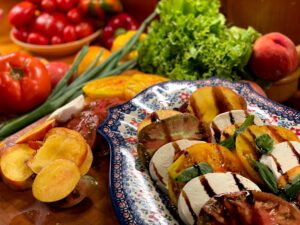
Growing over 250 varieties of fruits and vegetables in season we don’t like to play favorites, however, we love peach, tomato, and corn season. Looking at our crop sizes can tell you something. Growing over 35 acres of peaches with varieties including yellow, white, and donut peaches, they are in season from the end of July through the end of August, typically, on our farm. Peach trees have a life span of approximately 12 -15 years and the fruit is categorized into two main types; clingstone and freestone. As you may tell from the name, clingstone peaches’ flesh clings to the pit making it harder to separate the flesh from the pit. Freestone is the exact opposite whereas the flesh can easily be removed from the pit.
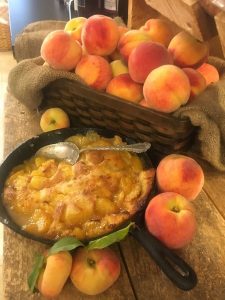
Peaches are a delightful way to get more fruits into your diet when in season. They can be eaten raw, added to smoothies, grilled, and added to most summer recipes. Add sliced peaches to your greens for a light-tasting summer salad, or incorporate them into oatmeal or cold cereal for breakfast. Try making fresh peach salsa or muddling peaches into drinks. We love this family recipe that has been handed down for generations, Grammy Tyson’s Skillet Peach Pudding. Get the recipe here. Learn more about peaches on our farm in our blog on our website here. Did you know that we make our own homemade peach cobbler ice cream (local legend says it’s a hometown favorite)?
Here Today, Gone Tomato
Botanically known as a fruit, culinary speaking we refer to tomatoes as vegetables. Tomatoes can be classified according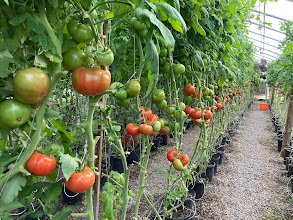
Tomato crops are a very popular crop for us here on our farm and they are a very labor-intensive crop as well. Our production team plants the seeds, takes time to stake the plants to keep them off the ground, and then affixes the plants to the stakes a few times as they continue to grow. As a popular crop for us, we plant both greenhouse and field-grown tomatoes to keep up with the desire from our guests. Our greenhouse plantings occur on three different occasions beginning with planting in our greenhouse around Christmastime. The greenhouse is heated and the tables are heated so that the seeds will have a little help to germinate. The second planting is typically around the 4th of July and in between the greenhouse plantings we sow field tomatoes in March, April & May.
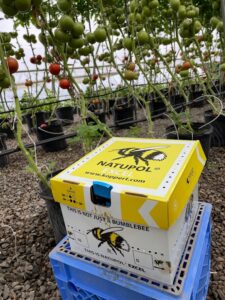
Enjoy a bite from a juicy peach or tomato by visiting our farm today!







